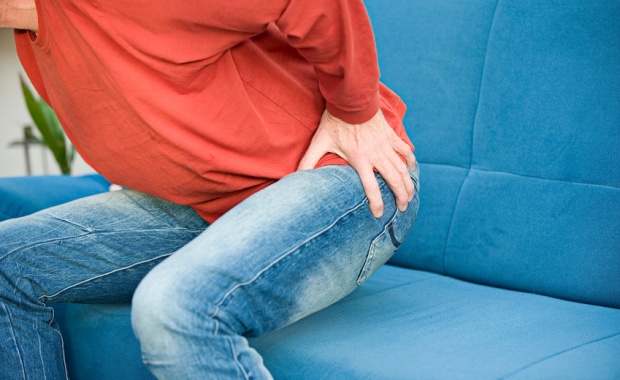Learning how to care for a loved one living with arthritis can be a rugged mountain to climb. For seniors living with this ailment, pain, stiffness, swelling, and various other debilitating side effects accompany each passing day as they attempt to navigate their newly-inaccessible world.

Despite arthritis being the most common disability associated with old age, many seniors—along with their freshly-appointed caretakers—are unsure which treatments are most effective for tackling physical and emotional hurdles.
Whether you are assuming the role of caretaker, passing the torch along to assisted-living specialists, or proactively researching options for future purposes, these pain management strategies are sure to keep you and your loved one out of physical and mental anguish.
Causes of senior arthritis
The most common type of arthritis among seniors is osteoarthritis—the breakdown of cartilage resulting in painful, inflammatory bone grinding. Prolonged wear and tear and individual factors like genetic conditions, previous injury, overuse, and weight-related stress create a breeding ground for arthritis to bloom, spiking seniors’ susceptibility to arthritis-specific symptoms.
Signs of early arthritis
Fortunately for seniors experiencing discomfort, speedy diagnoses are possible with easy-to-trace symptoms and individualized treatments. If your loved one is experiencing swelling, targeted heat-spots, stiffness, or persistent pain, resulting in mobility issues, they likely have arthritis.
To stay hypervigilant, educate yourself on the rarer complications, such as flu-like symptoms, that can potentially occur. However, these anomalous complications often make an appearance in conjunction with one or more of the previously listed indicators. If your loved one shows signs of senioritis, it may be time to ask the tough questions and research future care options.
Implement light exercise
Living with arthritis is no walk in the park. However, a slow-paced stroll may be just the thing that you and your loved one need to stimulate aching joints and stretch swollen muscles. Although most doctors would not recommend high-intensity workouts for seniors learning to manage arthritis-related pain, low impact, light exercises can positively benefit joint agility. Activities like yoga, stretching, short walks, or swimming can increase an elderly arthritis patient’s range of motion and endurance.
Try out different treatments
One size does not fit all when it comes to people experiencing arthritis pains and aches. There are many different at-home treatments available for loved ones or caretakers alike. Temperature therapy, including hot baths, heating pads or blankets, and cooling packs, have proven successful in reducing swelling and stiffness. Other therapeutic options include massages, alleviate chronic pain temporarily and reduce swelling, as long as the pressure remains gentle.
Avoiding certain foods
Although restricting your loved ones from snacking on particular food may prove difficult, the benefits are worth the fight. Avoiding foods with high salt, sugar, and gluten content reduces inflammation and boosts energy, which aids in endurance and enhanced mobility. Avoiding alcoholic beverages as often as possible also has positive effects, including minimizing the chance of collecting unexpected bumps and bruises along the way.
Assisted living
Although not always ideal or wallet-friendly, assisted living might provide better pain-management strategies than an at-home caretaker could. Knowing your limits as a family, friend, or caretaker is crucial to guaranteeing your loved ones the care they deserve. Many assisted-living facilities offer seniors struggling to manage their arthritis-related symptoms unique access to specialized treatments and a team of knowledgeable staff members. With medical professionals at your elderly loved one’s ready aid, these seniors can emotionally benefit from an enhanced sense of freedom and independence.
Elderly arthritis communities
Although this solution may not decrease your loved one’s physical arthritis-related pains, it may successfully help soften the mental impact of emotional issues like depression and feelings of isolation. Instead of feeling bedridden or confined to their personal living spaces, seniors with arthritis can seek support and form friendships with other elders experiencing similar circumstances. Like many past-alcoholics attest to the value of AA support groups, this kind of connection can help arthritis patients from all walks of life, including elders.
Final word
Seniors who have arthritis face unique obstacles and challenges as they try to navigate a world designed for the able-bodied. With a declining sense of autonomy, seniors can experience feelings of isolation and frustration. Not to mention, it takes a physical toll on both seniors and caregivers navigating the murky waters of arthritis and its many resulting health complications. However, there are many pain-management strategies on the market that have proven to be useful in reducing pain—emotional and physical—for seniors and caregivers alike.







